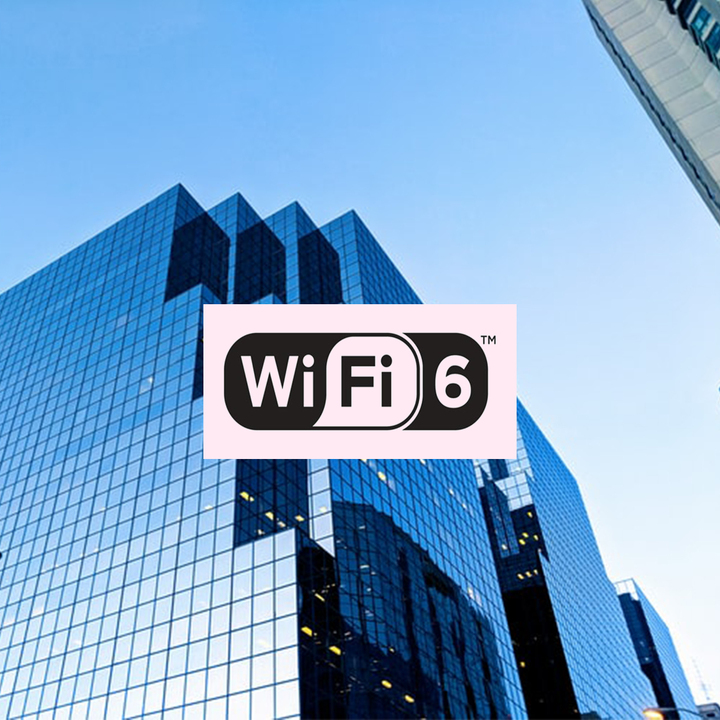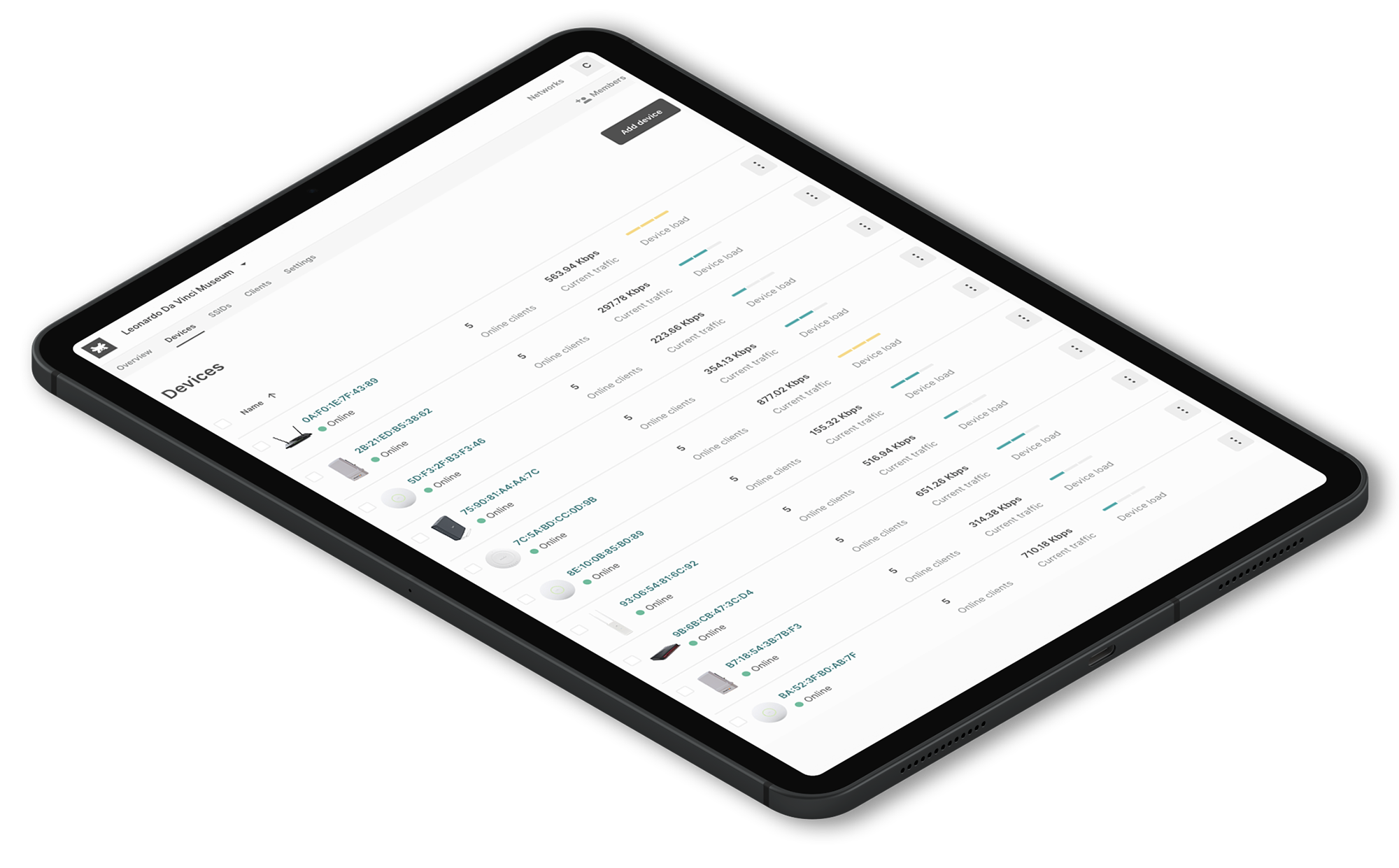
Wi-Fi 6 – A Technical Guide to the 802.11ax standard for Business Networks
Wi-Fi 6 (802.11ax) is the actual commercial generation of IEEE standard for wireless local-area business networks, faster and more powerful than the previous one Wi-Fi 5 (802.11ac). It is also known as High Efficiency Wi-Fi, for the overall improvements to Wi-Fi 6 clients under dense environments. This next-generation WiFi technology had come with the emerging 5G cellular technology that will change the way we connect to the network. With technological advancement, MSPs have to stay ahead of the trend to cope with the development of wireless networks.
The WiFi 6 or 802.11ax can connect devices that are far from the reaches in the crowded networks. This new WiFi standard will completely reform the way we connect to our smart devices entirely.
Just like the previous generation of technologies, the WiFi6 is emerging in the same manner. It is coming integrated inside the latest smartphones and laptops, new routers, and access points that promise faster and comparatively reliable connectivity for more devices.
WiFi6 is both a revolutionary and evolutionary standard. We all know that it will provide faster, more reliable connections. It is better able to handle a lot more traffic at once at a simultaneous time. It may not seem evident initially, but revolution is destined to follow the evolution.
Differences between Wi-Fi 4, Wi-Fi 5 and Wi-Fi 6
The 802.11ax standard was announced in 2018, which was the better, faster generation of WiFi4 and WiFi5 standards. It began to be certified in September 2019 in the devices. Slowly but gradually, the 802.11ax (WiFi6) started appearing on devices. For now, it is coming in the flagships of Apple and Samsung. The WiFi6 tech has also emerged in some routers and access points.
Of course, this technology offers significant improvements to its predecessors. Not only does it work in high-density environments, but it also supports dozens of devices. Furthermore, it also boosts the battery life of compatible devices and possesses higher data transfer rates than previous generations.
Talking about speed, theoretically, the WiFi 6 delivers maximum speed rates of 9.6Gbps across multiple channels, in contrast to the WiFi5’s 3.5Gbps. It is almost 250% more than the WiFi5 devices. The higher speed of WiFi6 is due to the OFDMA (Orthogonal Frequency Division Multiple Access) sub-channels, MU-MIMO user multiplexed, Beamforming, and 1024 Quadrature Amplitude Modulation (QAM). The beamforming enables higher data rates at a given range to increase network capacity. This all became feasible because of these multiple variations in Wifi5.
If you want to discover more about this technology, read our previous article, the ultimate guide to the 802.11ax wireless standard.
| 802.11n - Wi-Fi 4 | 802.11ac - Wi-Fi 5 | 802.11ax - Wi-Fi 6/6E | |
|---|---|---|---|
| Frequency Range (GHz) | 2.4 - 5 | 2.4 | 2.4 - 5 - 6 |
| Channel Bandwidth (MHz) | 20 - 40 | 20 - 40 - 80 - 80+80 - 160 | 20 - 40 - 80 - 80+80 - 160 |
| Subcarrier Spacing (KHz) | 312.5 | 312.5 | 78.125 |
| Symbol time | 3.2 | 3.2 | 12.8 |
| MU-MIMO | None | Downlink | Uplink and Downlink |
| Access Scheme | OFDM | OFDM | OFDM, OFDMA |
| Data Subcarrier Modulation | BPSK, QPSK, 16-64 QAM | BPSK, QPSK, 16-64 QAM | BPSK, QPSK, 16-64-256-1024 QAM |
| Coding | BCC (mandatory) - LDPC (optional) | BCC (mandatory) - LDPC (optional) | BCC (mandatory) - LDPC (mandatory) |
What is the difference between Wi-Fi 6 and Wi-Fi 6E?
WiFi 6E is the next generation of the WiFi 6 standard. It offers all the main features of the 802.11ax, giving also access to the 6GHz band. The new frequency band ranges from 5.925 GHz to 7.125 GHz, allowing up to 1,200 MHz of additional spectrum.
WiFi 6E reduces overlap and interference between multiple networks in high-congested areas as offices, apartments complexes, industrial districts.
| WiFi 6 | WiFi 6E | |
|---|---|---|
| Max. Data Rate | 1.5 Gbps per device | 2.3 Gbps per device |
| DFS scanning | Required ❌ | Not required ✅ |
| Capacity | Lower | Higher |
| Security | Secure | More Secure. WPA3 is mandatory. |
| 6GHz Legacy Devices | The 6 GHz band is not available on WiFi6. | The 6 GHz band is exclusive to WiFi 6E devices. More bandwidth, spectrum, and speed improvements guaranteed. |
| Simultaneous transmissions | 8K movies and large file download with possible short buffering. No AR/VR gaming. | 8K movies, AR/VR gaming and large file download all without buffering. |
| Latency | Reduced | Extrimely reduced | Network performance | Good | Better in congestioned enviroments |
Do businesses need Wi-Fi 6?
The WiFi 6 is all about improving the networks when a lot more devices are connected. The speed of 9.6Gbps is theoretical, and it is unlikely that you ever need such speed in real-world WiFi use. The fact that i has a much higher theoretical speed than its predecessor is quite essential. The more the devices are connected, you will experience more toll on your network. So Yes, it’s true that businesses need WiFi 6. The latest WiFi standard introduces new technologies that work on the issues that come while connecting dozens of WiFi devices on a single network. It lets the routers communicate with more devices by sending data to multiple devices in the same broadcast.
The usage of WiFi 6 in your business will surely increase your office productivity. It will help the companies drive more value from their present infrastructure. The vast transfer rate will allow companies to attain 5G level performance.
How will WiFi 6 impact your networks, and how soon?
We all understand that the new WiFi standard is providing faster and more reliable connections. The number of critical new features provide WiFi 6 networks and the devices with the ability to handle more traffic and efficiently. The vital point to note here is that WiFi 6 isn’t likely to be substantially faster than WiFi 5 when connected to a single laptop. However, when more and more devices get added to your WiFi 6 network, the story changes.
In this scenario, when current routers may get overwhelmed by the requests from many devices, WiFi 6 routers will effectively keep all those devices up to date with the amount of data each device needs. It is important to remember that you will only get the full benefits of WiFi 6 if both provider and client devices are certified for WiFi 6.
WiFi generations rely on hardware and not just on software updates. To get this new version of WiFi running, you’ll need to buy new devices. The new devices with WiFi 6 will start coming into the market by default. It’s not something that you’ll want to run out to the store and buy.
Year by year, MSPs, ISPs, and SPs are facing the challenge to provide higher throughput and bandwidth for multiple connected devices in enterprise networks. Hardware is not enough to guarantee an adequate and democratic sharing of WiFi connection. A new standard was necessary to manage the huge quantity of devices in the networks (anchor link to the chapter dedicated to e-waste).
On April 23rd, 2021 the FCC voted and approved the allocation of the new 6GHz band for Wi-Fi. WiFi 6 represents a new revolution for enterprise and SMBs WiFi networks.
Should you upgrade your business networks to WiFi 6?
Well, Yes, you should upgrade your business networks to WiFi 6. It offers more speed, a more reliable connection, improved battery life, and better security. This new WiFi standard enables an unimpeded network by allowing more client devices and IoT devices to connect. Undoubtedly it seems a wise decision to upgrade your business networks to WiFi 6. With time new devices have emerged that are WiFi 6 certified but still, it is a long way to get transitioned to this new standard. The sole reason behind this is that the WiFi 6 will appear in the market by default as it has appeared on flagship smartphones of Apple and Samsung and some routers. These routers are so far quite expensive high-end devices.
The inclusion of WiFi 6 in the devices has begun. As time will pass the prices will start coming down, and they already are since this network was introduced. The WiFi Alliance began certifying devices in 2019, so the routers and devices became cheaper. There is no need to rush to replace every WiFi5 device and network component simultaneously. The reason behind this is that there aren’t many WiFi6 clients out there. It will take a few years for the WiFi 6 to make its way to the market. The hardware for this WiFi standard is still being built, and interoperability testing is being performed, implying that it is worth waiting before opting for this standard.
Wi-Fi 6 has already made its way into the market but still, it will take time to reach its full potential. There is no doubt that 802.11ax has bought immediate benefits in network speed, capacity, and responsiveness. These are some of the perks that will improve overtime as the new WiFi standard capable devices replace the system with older generation connectivity. This network will revolutionize the way by bringing network performance to the optimum level in virtually every segment. To get the most out, buyers have to choose the best technology available for their deployments.
Tanaza is constantly adding more APs to the list of compatible devices. It is currently working on a batch of APs to support customers when the right time comes to upgrade the networks with the latest technology.
Have you tried Tanaza?
Try our Interactive Demo and test all the features of Tanaza. Experience the power of WiFi cloud management in seconds.
✔︎ No credit card required

Related articles:
https://www.tanaza.com/blog/802-11ax-wireless-standard/

